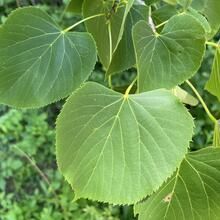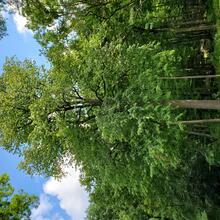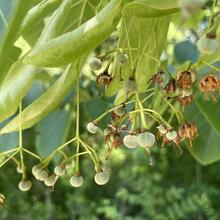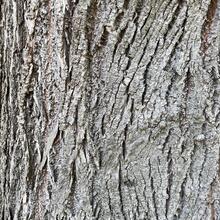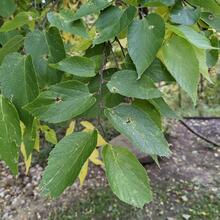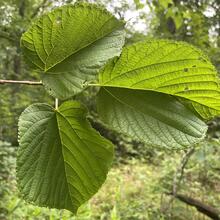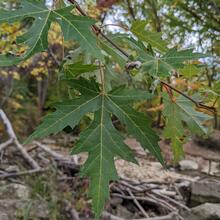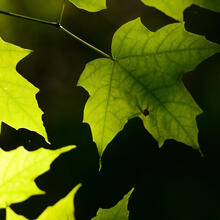Tilia americana
Malvaceae
Favored tree of honeybees which produce specialized honey from the nectar. Sensitive to disturbance. Prefers soil with organic material. Deer browse likely, but not severe. Produces root sprouts.
Summary
 Climate Tolerance
Climate Tolerance
Fair
Wildlife Benefits
Nectar/pollen source for bees; seeds food source for small mammals; moth/butterfly host
Pollination Type
Pollinator
Plant Hardiness Zones
2 to 8
# Butterfly/Moths that use as host
151
Bloom Time
Spring/Summer (Apr-Jul)
 Shade/Sun Tolerance
Shade/Sun Tolerance
Full Sun to Shade: Receives less than 2 to 6 or more hours of direct sunlight
 Maximum Height
Maximum Height
Large (75-100 ft)
 Growth Rate
Growth Rate
Moderate: 1 ft- 2 ft per year
 Soil Type
Soil Type
Loam: Equal mix of clay, sand, and silt. Moderate moisture retention and high nutrient availability.
 Soil Moisture Tolerance
Soil Moisture Tolerance
Moist - Dry: Soil can be damp for periods of time and can retain little to no water for periods of time
Root - Fungal Association
Ectomycorrhizae: Symbiotic relationship with fungi that exist on outside of plant root cells, facilitating nutrient uptake
Pest & Pathogen Risks
Low; verticillium wilt
 Urban Stress Tolerance
Urban Stress Tolerance
Low: Tree will not grow well in the urban environment
Drought Tolerance
Sensitive: Tree will become stressed during periods of drought
Coefficient of Conservatism
6
Native Status
OH-Native: Species is native to Ohio
NatureServe G-rank
G5
Plant Community Type
- Beech Mixed: Common
- Oak Mixed: Frequent
- Alluvial: Occasional
- Red Maple Mixed: Occasional
- Ruderal: Rare
Bloom Color
Yellow
Form
Tree
 Lifespan
Lifespan
Medium: 100-250 years
Soil pH
Circumneutral (pH 6.8-7.2)
Wetland Indicator Status
FACU: Facultative Upland, usually occurs in non-wetlands, but may occur in wetlands
Soil Compaction Tolerance
Sensitive: Tree will become stressed from soil being compacted
Heat Tolerance
Sensitive: Tree will become stressed from increased temperature due to urban heat island effects
Salt Tolerant
Sensitive: Intolerant to either aerial salt spray and/or salt present in soil
Native County Status
Cuyahoga
Geauga
Lake
Lorain
Medina
Portage
Summit
IUCN Red List Assessment
Least Concern
